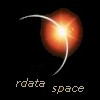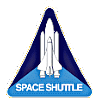
U.S. Space Shuttle (Space Transport System)
Payloads - Astronomy


U.S. Space Shuttle (Space Transport System)
Payloads - Astronomy

The shuttles deployed a number of deep space astronomy instruments into orbit. Other astronomy studies also used instruments mounted in the shuttle payload bay and on free flying, retrievable platforms.
The primary orbital astronomy payloads are summarized below.
CGRO was launched on a two-year mission to search for the high-energy celestial gamma ray emissions, which cannot penetrate Earth's atmosphere. GRO was the second of NASA's four Great Observatories. The Hubble Space Telescope [STS-31] was the first. GRO science instruments were Burst and Transient Source Experiment (BATSE), Imaging Compton Telescope (COMPTEL), Energetic Gamma Ray Experiment Telescope (EGRET) and Oriented Scintillation Spectrometer Experiment (OSSE).
[STS-37] (1991)
Wikipedia Compton Gamma Ray Observatory
Gunter's Space Page CGRO
Encyclopedia Astronautica GRO
Astronomical observatory designed to operate above the Earth's obscuring atmosphere to observe celestial objects at ultraviolet, visible and near-infrared wavelengths. When conducting an observation, the space telescope is rotated into the proper orientation, then pointed to the star it is to view and locked in place. It is the first spacecraft specifically designed for on-orbit servicing.
* Launch Deployed in a 380 statute-mile (611.5 km) Earth orbit.
* Servicing Mission 1 Restored the HST vision, marred by spherical aberration, with the installation of a new main camera and a corrective optics package. The flight also brought instrument upgrades and new solar arrays to the telescope.
* Servicing Mission 2 The older Goddard High Resolution Spectrograph and the Faint Object Spectrograph were exchanged for the Space Telescope Imaging Spectrograph (STIS) and the Near Infrared Camera and Multi-Object Spectrometer (NICMOS). In addition other existing hardware was replaced with upgrades and spares.
* Orbital Systems Test (HOST) A platform carried experiments to validate components planned for installation during the third Hubble Space Telescope servicing mission and to evaluate new technologies in an earth orbiting environment.
* Servicing Mission 3A NASA officials decided to move up part of the servicing mission that had been scheduled for June 2000 after three of the telescope's six gyroscopes failed. Three gyroscopes must be working to meet the telescope's very precise pointing requirements. A gyro failed in 1997, another in 1998 and a third in 1999. All six gyroscopes were replaced and a new computer was installed that dramatically increased the computing power, speed, and storage capability of HST.
* Servicing Mission 3B Installation of a new science instrument, the Advanced Camera for Surveys (ACS), new rigid solar arrays (SA3), a new Power Control Unit (PCU) and an experimental cryocooler for the Near Infrared Camera and Multi-Object Spectrometer (NICMOS). Shuttle Columbia also re-boosted HST to a higher orbit.
* Servicing Mission 4 Installed two new instruments, the Cosmic Origins Spectrograph and the Wide Field Camera 3. The mission also replaced a Fine Guidance Sensor, six gyroscopes, and two battery unit modules to allow the telescope to continue to function at least through 2014. The crew also installed new thermal blanket insulating panels to provide improved thermal protection, and a soft-capture mechanism that would aid in the safe de-orbiting of the telescope by an unmanned spacecraft at the end of its operational lifespan.
[STS-31, 61, 82, 95, 103, 109, 125] (1990, 1993, 1997, 1998, 1999, 2002, 2009)
Wikipedia Hubble Space Telescope, Space Telescope Science Institute
Gunter's Space Page HST
Encyclopedia Astronautica HST
A carrier module that can support stellar, solar, or Earth fine-pointing experiments requiring microgravity or space environments away from the shuttle. It is operated independent of the orbiter and deployed to fly free in space before being retrieved.
* SPARTAN-1 A rectangular structure deployed and retrieved using the shuttle robot arm. It performed medium resolution mapping of the X-Ray emission from extended sources and regions, specifically the hot gas pervading a large cluster of galaxies in the galactic center.
* SPARTAN 204 Obtained data in the far ultraviolet region of the spectrum from diffuse sources of light. It operated both while attached to the shuttle's robot arm, and in free-flight away from the Orbiter. The astronomical diffuse sources included nebulae, celestial diffuse background radiation and nearby galaxies. The artificial sources included emissions associated with the Orbiter.
[STS-51G, 63] (1985, 1995)
Gunter's Space Page Spartan 101, Spartan 204
Encyclopedia Astronautica Spartan
Studied the hottest components of the interstellar medium, gases at temperatures at approximately 1 million degrees Kelvin, by detecting the x-rays emitted there. By measuring the gas temperature and composition, the DXS provided important clues to the origin, evolution and physical state of this constituent of the Milky Way galaxy.
[STS-54] (1993)
University of Wisconsin DXS
A telescope mounted on the Shuttle Pallet Satellite (SPAS) payload carrier.
* ORFEUS-SPAS I Designed to provide information on how stars are born and die, while studying gaseous interstellar clouds.
* ORFEUS-SPAS II Mission dedicated to astronomical observations at very short wavelengths to: Investigate nature of hot stellar atmospheres; investigate cooling mechanisms of white dwarf stars; determine nature of accretion disks around collapsed stars; investigate supernova remnants; and investigate interstellar medium and potential star-forming regions.
[STS-51, 80] (1993, 1996)
Wikipedia SPAS-ORFEUS
Gunter's Space Page ORFEUS-SPAS 1, 2
A prototype instrument designed to look for dark and missing matter in the universe. The main instrument, Alpha Magnetic Spectrometer-02, is mounted on the International Space Station.
[STS-91] (1998)
Wikipedia Alpha Magnetic Spectrometer, International Space Station (ISS)
At its launch, Chandra was the most sophisticated X-ray observatory ever built. It was designed to observe X-rays from high energy regions of the universe, such as hot gas in the remnants of exploded stars.
[STS-93] (1999)
Wikipedia Chandra X-ray Observatory
Gunter's Space Page AXAF-I (Chandra, CXO)
Encyclopedia Astronautica Chandra